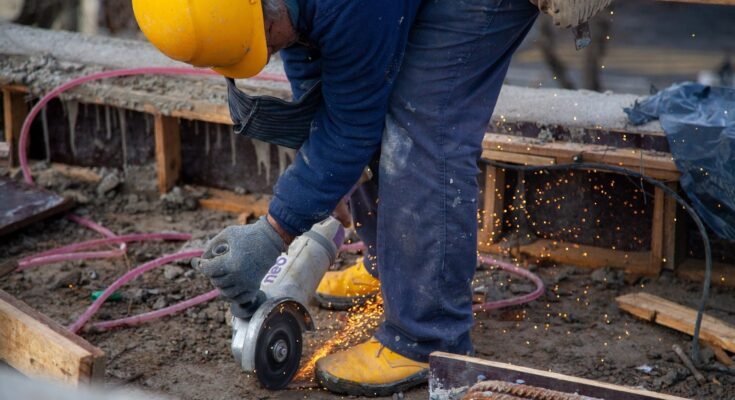Understanding and identifying workplace hazards ensures the well-being of employees in the workplace. From physical dangers to chemical hazards, addressing each issue is essential for an organisation. By assigning roles and responsibilities to employees, an organisation is legally obligated to identify, assess and control hazards. With Hazard Identification and Risk Assessment (HIRA), potential risks are identified and their impact is evaluated so that relevant measures can be implemented. A formal safety system helps create a proactive safety culture with the help of training and communication, reducing the potential of accidents and injuries.
Read on to learn more about who is responsible for conducting a hazard assessment, HIRA and ways to implement the system for maximum effectiveness.
HIRA (Hazard Identification and Risk Assessment)
HIRA, or Hazard Identification and Risk Assessment, is an organised process in occupational health and safety management systems. The system aims to prevent workplace accidents, injuries, and illnesses by addressing issues before they lead to detrimental incidents.
By analysing and prioritising risks, organisations can allocate resources effectively. The management implements effective controls and also creates effective controls that evolve with changing business operations.
Who is Responsible for Conducting a Hazard Assessment?
To answer who is responsible for conducting hazard assessment, a collaborative effort spread across multiple departments is a must. Conducting hazard assessments involves roles delegated to officials across the entire management team.
- Employers hold primary responsibility under occupational health and safety laws. They are required to identify potential hazards and implement relevant control measures.
- A safe working environment is strived for through regular risk evaluation. Supervisors and safety professionals monitor daily security operations to identify hazards on the ground.
- The leadership enforces compliance with safety policies and regulations. Third-party consultants and assessors help gain an unbiased evaluation of workplace hazards.
- Professionals with specialised knowledge and expert opinion offer to identify risks that internal teams might miss. Leadership also aids by driving the overall strategy involving multiple roles in the assessment process.
Implementing and Executing HIRA
Here is a step-by-step guide to implement HIRA to avail maximum benefits:
- Build a Competent Safety Team
A multidisciplinary team from various departments is essential for an appropriate exchange of information and experience. Clearly defined purpose and scope of HIRA ensure focused and consistent processes. Third-party security professionals and in-house management teams can work together to manage potential security threats.
- Identify Potential Workplace Hazards
A thorough evaluation of a workplace, areas and tasks helps uncover potential safety risks. Techniques like collecting employee feedback help in the timely detection of:
- Mechanical and physical hazards like maintaining noise levels and maintaining the temperature of a place, and so on.
- Exposure to harmful chemicals and other ergonomic strains can harm employees.
- Various biological risks and psychological stressors are also included. Employees can complain about excessive workloads and harassment.
- Evaluate Risk Levels
Each possible hazard should be identified and studied. The management should study how likely it is to occur and the severity of its impact. Risk metrics and scoring systems help in categorising risks, which determines the urgency in taking actions.
- Design Risk Control Measures
Developing targeted solutions is essential for eliminating high-priority hazards. The leadership should consider a hierarchy of controls. Hazards must be eliminated, and relevant administrative and engineering actions must be taken.
- Educate and Train Employees
Regular training for employees is essential. This way, recognising hazards and understanding their management becomes smooth. Staff must be encouraged to get involved in safety practices for better awareness.
- Track and Respond to Changes
Executing regular inspection drills and audits helps monitor existing controls. The management must stay alert to new hazards introduced by changes in operations and equipment. This helps in updating safety measures accordingly for better security.
- Maintain Comprehensive Records
Maintaining a detailed documentation of all hazard identification efforts is a must. Timely risk assessments, framing proper control strategies and proper employee training help in maintaining operational continuity. Traceability and accountability support audits and legal compliance.
- Refine Safety Procedures
Periodic review, regular safety meetings and incorporating lessons from incident reports help in refining security processes over time. Technological advancements, as per employee suggestions, help the management to meet changing regulatory requirements.
Conclusion
Understanding workplace-associated roles and responsibilities is essential for the smooth functioning of a business. An effective hazard identification system helps control risk aversion strategies and execute safety-enhancing practices. Risk assessment is the cornerstone of hazard management. When the management team understands their responsibilities and fulfils their roles, organisations can comply with legal standards and reduce the overall risk of accidents. Overall well-being of the workforce is enhanced, which instils confidence among the stakeholders and adds to the reputation of a company.
Frequently Asked Questions (FAQs)
Q. 1 What is a workplace hazard?
Answer 1: Workplace hazards are various elements, objects, activities or processes that could cause harm or illness to employees. Recognising and addressing these hazards ensures a safe and healthy working environment. Proper risk management and preventive measures must be taken at the right time.
Q. 2 What are the benefits of implementing HIRA?
Answer 2: The benefits of implementing HIRA are overhead cost reduction, improved employee morale and complete legal compliance. Consistent product quality is maintained, and businesses gain a competitive advantage in the market.
Q. 3 What is the difference between HAZOP and HIRA?
Answer 3: HAZOP, also called Hazard and Operability Study, is a structured technique that identifies process hazards and operational issues. HIRA is a broader term that includes identifying hazards and assessing risks across various types of operations.
Q. 4 What are the 4 main categories of risk assessment?
Answer 4: The 4 main types of categories of risk assessment usually opted for by an organisation are qualitative, subjective, objective and quantitative.
Q. 5 What are the 5 main pillars of a risk management system?Answer 5: The 5 main pillars of a risk management system are identifying risks, assessing risks, controlling risks, recording findings and reviewing controls. Going through these steps in a systematic manner helps the management to maintain operational continuity after or during a crisis.




